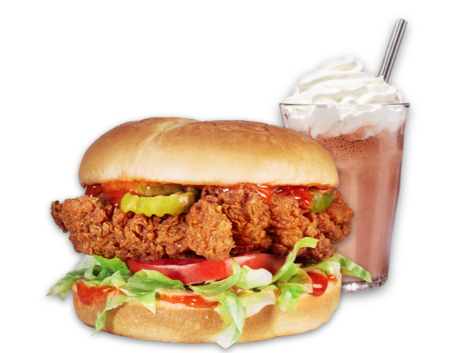
What is a Climate-Smart Diet?
Easy tips for eating sustainably every day.
Whole Foods predicted climate-consciousness as a food trend in 2020, and they were right. According to studies, 75% of millennials are now adjusting their consumer behavior, keeping its environmental impact in mind. So what is a climate conscious diet? And how can the average citizen move into a more sustainable way of eating without adding more work to their week or money to their budget?
A climate-conscious diet shifts our eating habits toward less resource-intense foods like vegetables, fruits, wild foods, sustainable fish, and pasture-raised meats. In this way, we essentially vote with our dollars. The more
people that do a thing, the trendier that thing becomes. We know this. If all of us stopped buying green crayons tomorrow, Crayola would stop making them. If we all started eating only pasture-raised chicken in a suitable portion size and stopped throwing out our food, we would put factory farmed chicken out of business.
Here, some tips for sustainable eating every day.

1. Eat a variety of foods
Just like healthy farming practices introduces a mix of rotating crops to create vibrant biodiversity, we have to eat a mix of things to create a healthy gut biome. We also want to try and reduce impact by consuming planet-friendly foods.
For this reason, choose a daily mix of organic, sustainable, regenerative, and local food when possible. Eat leafy greens, root vegetables, fruits
2. Eat clean meat
For a list of local regenerative farms in Washington state, check out the online Washington Food & Farm Finder. Which leads up to point #3……

3. Support Regenerative Agriculture
Soils sequester carbon — that’s a natural activity that doesn’t require human influence to occur. When we disturb soils, however (think tractors pulling across dry wheat fields, developers paving over open land to build, or massive environmental events), this carbon is released into the atmosphere causing surface temperatures to rise.
It’s the big companies and global industires that really impact the environment — transportation, burning fossil fuels for electric power, goods and raw materials we use each day, and of course agriculture. By supporting smaller-scale farmers committed to limiting their influence on the environment, we can eat more sustainably, tipping the scale for agricultural emissions.
4. Don’t waste food
Americans throw out billions of pounds of food each year. Shocking, right? Food waste is considered “high-quality food that is throw away, rather than eaten,” says Feeding America. They list the following reasons we toss out so much food:
Uneaten food that is thrown out at homes, stores, and restaurants Crops left in fields because of low crop prices or too many of the same crops being available Problems during the manufacturing and transportation of food Food not meeting retailers' standards for color and appearance In recent years, a handful of businesses have cropped up to try and solve for this. You can order Imperfect Foods for home delivery or pick up local leftovers.
MT JOY
We want to leave this earth better than we found it, improving conditions as we move through life. This is the most important philosophy we want to shine through all of our work here at Mt. Joy, and the motivation for sharing information such as this.
We are committed to building a supply chain that works for all stakeholders; we want to make sure chicken isn’t being compromised by poor genetics and a life of confinement; we want to make sure that the farm worker isn’t being compromised through poor working conditions; we want to make sure that communities aren’t compromised through air quality issues; and we want to make sure that you — the “consumer: — are eating the best, most healthy food possible.









